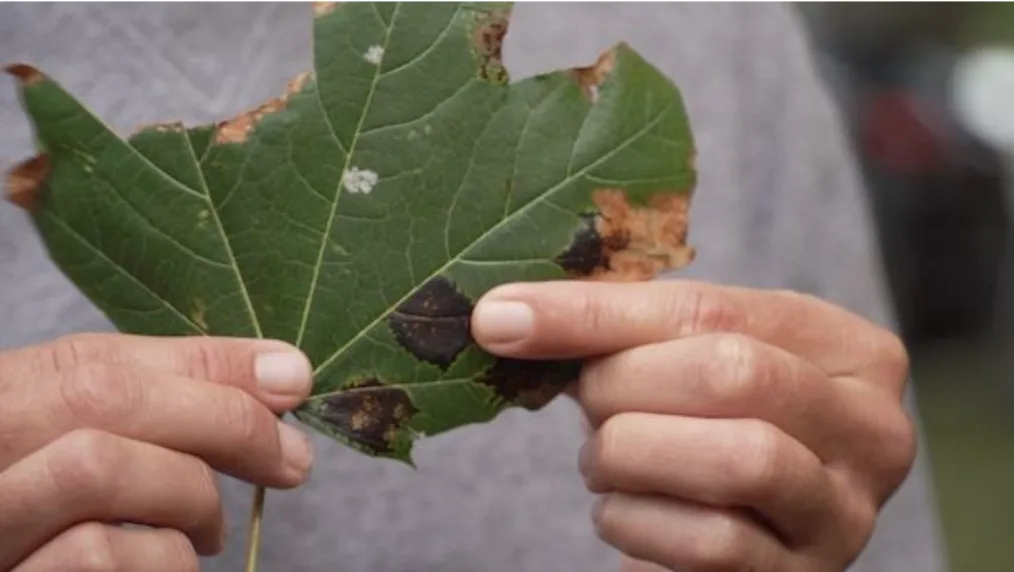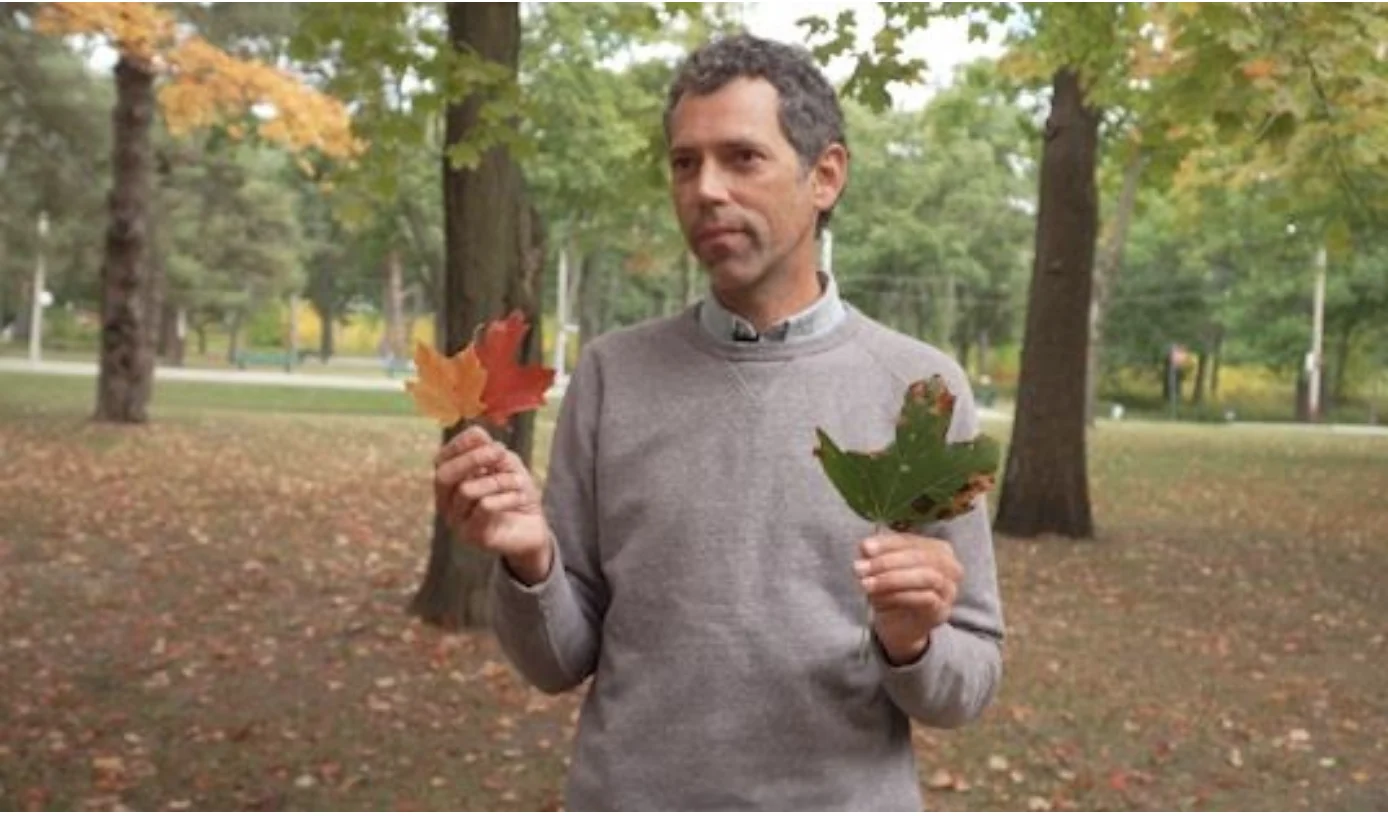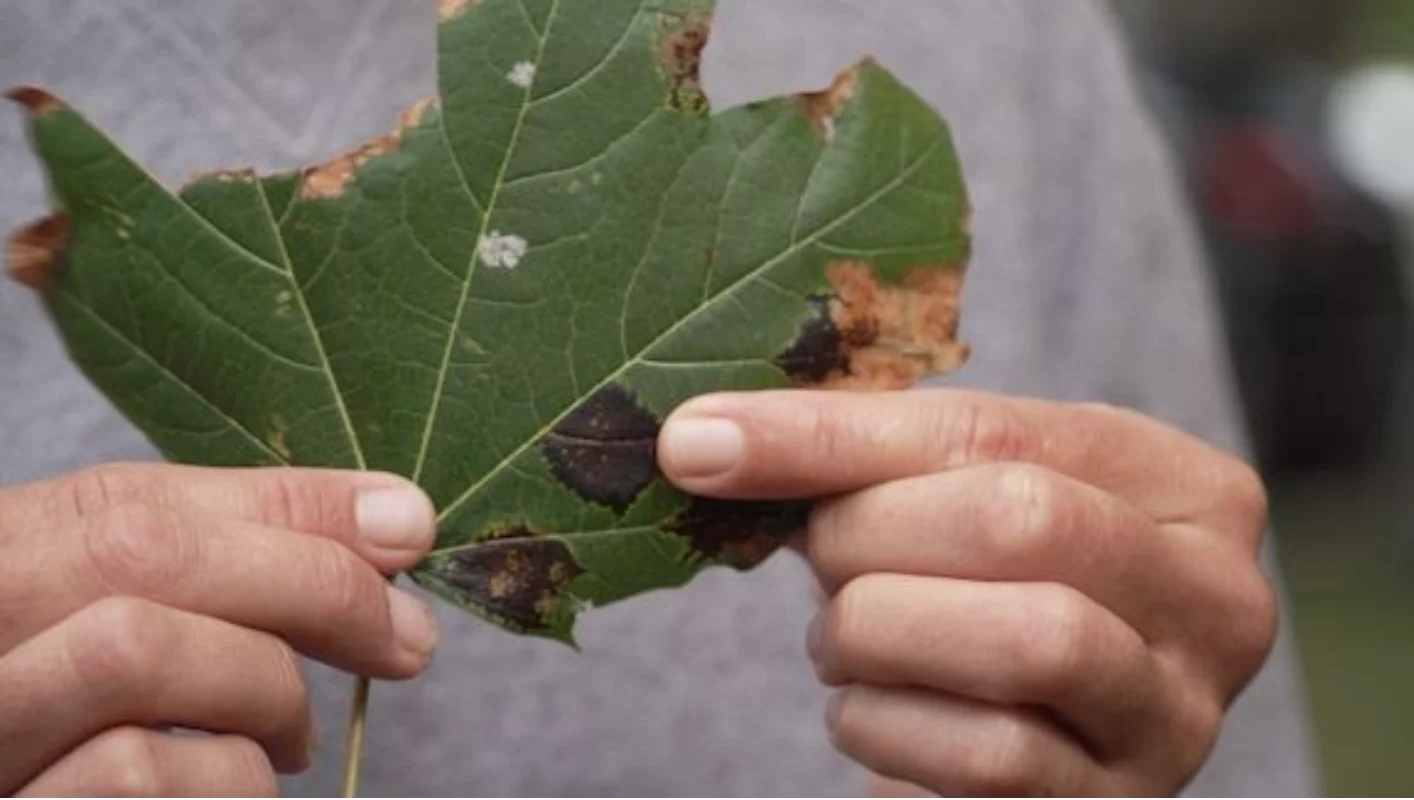
‘Highly invasive’ tree putting our iconic sugar maple at risk
There are many invasive species of plants disrupting our ecosystems but one of them is putting our iconic sugar maple at risk - yes, the beautiful maple leaf that adorns our country's flag. The European Norway maple has a similar leaf shape and often gets mistaken for the sugar maple. The difference is its leaves contain a toxic latex that harms insects and pollinators.
Fall is one of the most beautiful times of year. It’s when nature paints landscapes with beautiful colours of oranges, yellows and reds and perhaps the star of the show is the iconic sugar maple.
“The sugar maple is regarded, actually by many people around the world, to be the most beautiful tree in the world for its colours,” said Eric Davies, with the faculty of forestry at the University of Toronto.
Davies says the sugar maple is ecologically dominant in eastern North America and plays a huge role in providing a habitat for biodiversity of all types.
“Maple syrup -- this is something Indigenous people taught European settlers, and has become a huge important part of life and also the wood is very revered," Davies explains. "You can make cutting boards because there's no toxins in it, you can build beautiful furniture, [and] it's [also] really good for burning in your fireplace. It's good for just about everything that you would want a wood to be good for.”
SEE ALSO: Can you name these trees? Quiz yourself
But this native tree is among the many threatened by invasive species, like the European Norway maple. They may look similar when it comes to their foliage, but one is detrimental to the ecosystems it invades.
Davies says when you think of ecosystems, think in terms of a trophic food web: a pyramid.
“At the base layer you have plants then you have the insects that eat those plants then you have the birds that eat the insects. If you get rid of the base layer, the plant layer, and you replace it with invasive species, there's nothing for the insects to eat. There's no insects, there's nothing for the birds to eat and the whole ecosystem collapses.”

Eric Davies holds leaves from a sugar maple tree (left) and a 'damaged' one from the European Norway maple (right) in Toronto’s High Park. Source: Marta Czurylowicz.
“Invasive species are typified by a number of different traits: small seed size, very aggressive toxic plants that can outcompete the native plants. So for instance, Norway maples produce seeds every year, and thousands of them, but the native sugar maple only produces crops every two to three, four, five years,” Davies explains.
Take for example one of Toronto’s gems: High Park. Dozens of people descend there year-round to take in nature. Be it for the sakura cherry blossoms in the spring, or the beautiful colours in the fall. But what appears to be a thriving greenspace is in fact an example of a collapsing ecosystem.
“What we're going to notice here is that this western border of High Park is surrounded -- they've planted Norway maples in the park, and they've now gone wild in the natural areas of High Park and this is very problematic because, as you'll see, not only do they not have a beautiful colour, but they're taking over all the vegetation and providing no habitat for diversity,” says Davies.
The Norway maple is allelopathic. Its roots exude a toxic substance that kills things that grow underneath it, allowing for the tree to continue growing. It also leafs out really early and stays really late so the grass under it often doesn’t grow.
“The reality is if you were to kind of take an aerial view of Ontario and look at all the tree nurseries, Norway maple still tends to be a very common tree growing because it is very tough, very cheap to grow. You know from a distance it's beautiful but people didn't appreciate how invasive it was,” he said. “Initially, for a long time we kind of wanted a pest-free environment with no insects. Now we're realizing that amongst those insects there's pollinators and butterflies and all these beautiful things so the Norway maple is actually a toxic tree that grows really quick and doesn't have biodiversity which wasn't as much of a problem we didn't think 50 years ago but now we want to have pollinators and birds in our communities that we are trying to shift back to the native trees.”

Tar spots: Norway maple. Source: Marta Czurylowicz
TAR SPOTS
Tar spots are black raised spots on the leaves of Norway maples caused by a fungus. They emerge on leaves in late summer and early fall and cause the leaves to turn brown and shrivel.
“Only 20-30 years ago you couldn't even find this in Toronto and now it's on every tree. So I'm increasingly worried because it's so genetically similar to our native sugar maple that if this disease jumps over and this went on our sugar maple it would be devastating,” says Davies.
He wants Canadians to educate themselves to help restore native species.
“Learn your plants because then you can help get rid of the invasive ones and then you can help collect seeds from the native ones. We need to basically get rid of the invasives on one hand and plant more natives on the other hand and hopefully get something back.”
(Editor's note: A previous version of this article stated that the Norway maple is 'lilyopathic'. This was meant to say 'allelopathic', meaning that it inhibits the growth of other plants around it. This has been corrected. We apologize for any confusion.)










